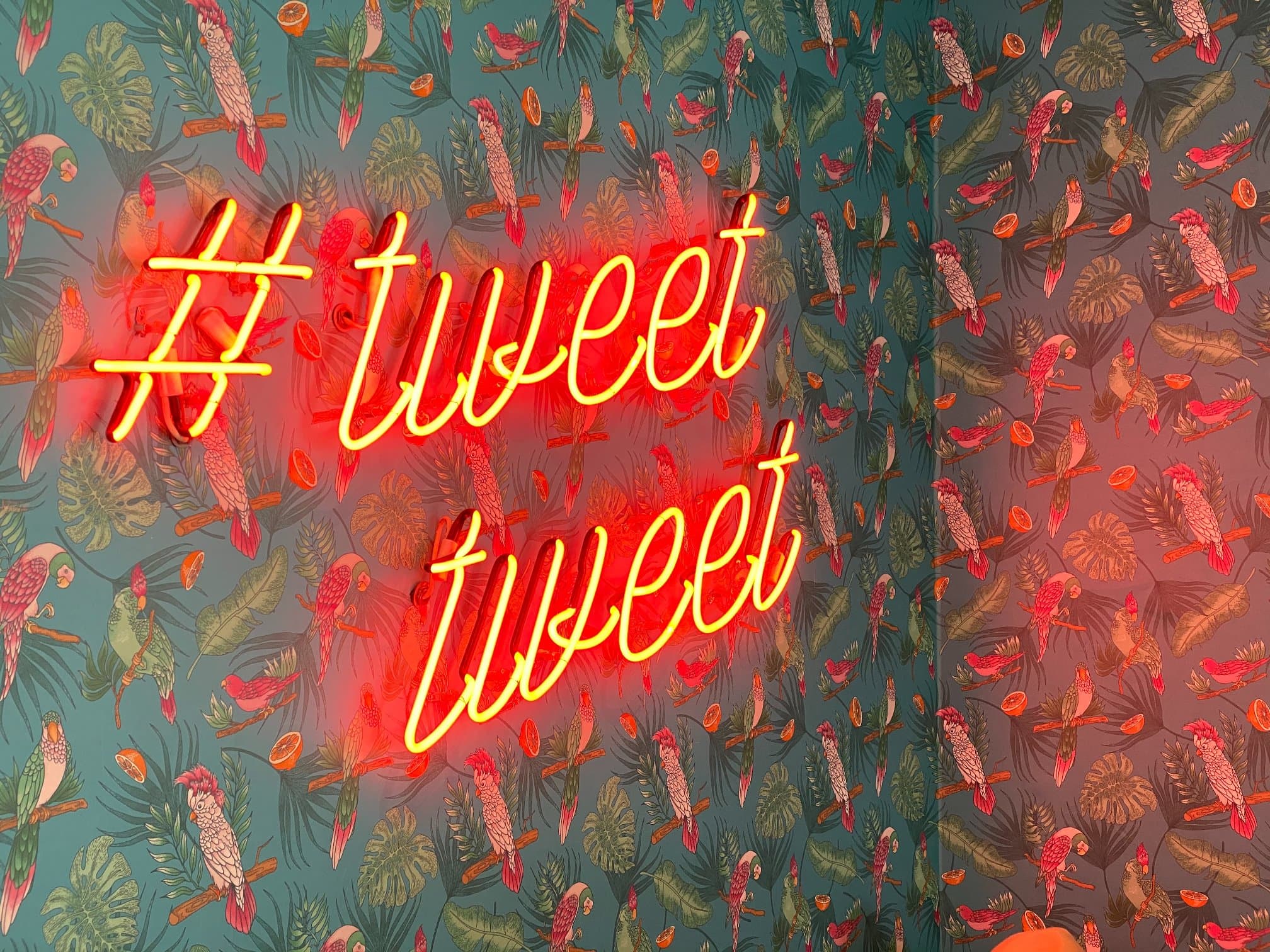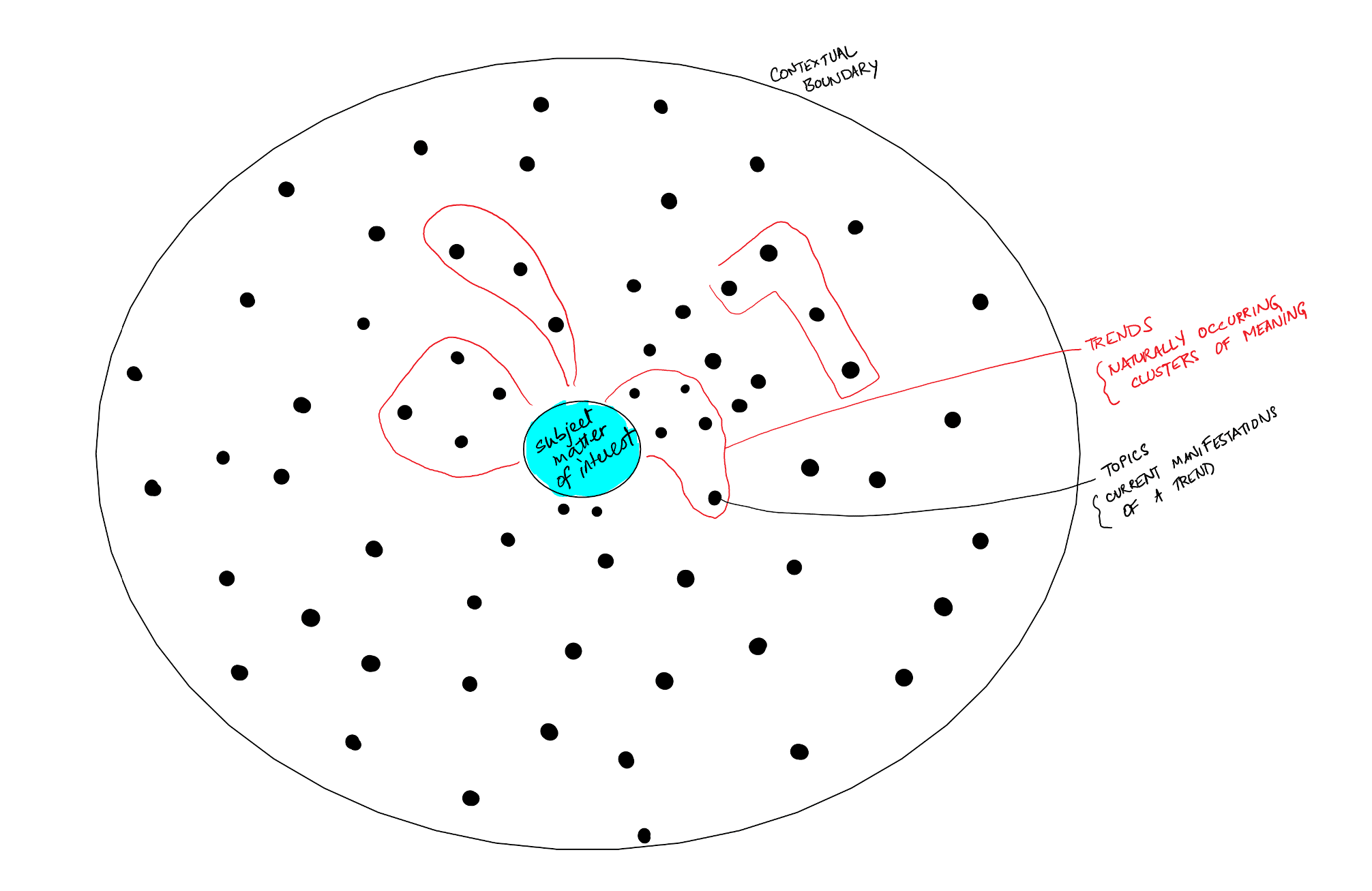Contrary to popular perception, a trend isn’t something that’s getting a lot of mentions at a point in time.
There’s a broad misconception about what makes something a trend and it often sends corporate innovation on a wild goose chase.
Over the course of the last ten years, we’ve all grown to accept the idea that a trend is something that is being talked about a lot (let’s thank Twitter for that, shall we?).
How many mentions is something getting? Have the mentions grown significantly over the last little while?
These are the types of questions we find ourselves asking when we are trying to determine if something is trending. As I am sure you’ve guessed from the title of this article, this method of defining trends is inherently inaccurate.

There are two main reasons why –
The first is the fact that such a definition makes no acknowledgment of the underlying context within which a trend is being examined. For example, the flavor ‘cranberry’ might be getting a ton of mentions online (for whatever reason…maybe people love the Cranberries again!) but when examined in the context of a healthy beverage, it may not in fact be a trend worthy of mainstream acceptance. Context is everything and adding the lens of context requires the framework of ‘meaning’. But more on this later.
The second reason is that such a definition completely ignores the fact that language is never truly black and white. Just because the word ‘cranberry’ is getting a lot of mentions does not necessarily mean that ‘cranberry’ is in fact a trending flavor. We have made far too much progress as a society over the last hundred years especially in the fields of linguistics and the Social Sciences to turn a blind eye to the fact that language, the words we use in everyday conversation, is nothing but a set of pointers. Words point to things. They point to larger sets or themes of meaning that are being inadvertently and often subconsciously communicated by people (consumers) in culture. ‘Cranberry’ in most cases isn’t actually about the fruit or the flavor, it’s about something else altogether. For example, it could be referring to a renewed interest in preventative health practices or the use of food and beverage to improve mental focus or energy.
How should one go about identifying ‘real’ trends?
There are some fundamental requirements to identify trends in context.
To start, as you might have already guessed, we need to develop the ability to understand context. If we’re trying to look for trends within the context of, let’s say, sustainable personal care, the first task is to examine the broader context of conversations that consumers are having around sustainable personal care. That is, we need to get beyond examining the direct mentions of sustainable personal care or its related synonyms but rather examine the full range of natural conversations that consumers end up having within its broader context. Even when they’re not specifically using the words “sustainable personal care” they may be clearly responding to someone who has instigated the topic and thereby engaging on the broader subject matter.
Next, we need to explore the themes of meaning emerging, from within the context. Themes of meaning are nothing but sets of words or topics that all connect together naturally because the consumer associates a shared set of meanings with them. For example, you may see a theme of meaning that connects sustainability in personal care to the use of certain chemicals in the manufacturing of packaging. Turns out, the consumer is looking beyond packaging waste, plastics, even, natural products to think about the supply chain — specifically, all the chemicals and chemical processes that are required for packaging production that are often hidden from the spotlight but heavily damaging to the earth nonetheless (toxic for the environment). This is an example of what we would call a ‘real’ trend. Now, within this set of meaning, there are many chemicals that consumers may mention quite a bit like Trichloroethane. But it’s important to distinguish the ‘meaning’ from the ‘mention’. Trichloroethane is a pointer. It doesn’t matter how much or how little it has been mentioned on the internet. What matters is what it points to. Which in this case is the concern over chemicals used in packaging.
That is the ‘real’ trend here.

Once we get here, we’ll need to start thinking about quantification and relevancy. To do so, we need the ability to quantify the relative importance of each theme of meaning in the underlying context. This is when we’ll examine not just the volume and frequency of each theme (within context) but also the linguistic relationship established by consumers through the natural discourse they carry with each other. The net result is the ability to develop a semantic scoring system that allows us to identify the most dominant themes in a given context.
What we end up with is a set of prioritized trends.
Themes of meaning that tell us about what is really shifting in culture, with examples of how that might be manifesting today.
This approach is really critical because it gets us away from focusing on the mentions (which are mere manifestations of trends). In the context of the earlier example, it gets us away from focusing on Trichloroethane and instead on what it means to the world of sustainable personal care. If we can do that, then we’ll identify trends that will offer long-term opportunities for corporate innovation rather than short-term blips on the tactical radar. It will allow us to create a truly healthy innovation pipeline and think proactively about the macro (and consequently, micro) shifts affecting our categories.
